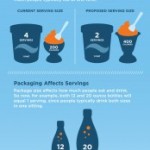GMO’s – the Right to Know
 The controversy surrounding genetically modified foods (or organisms) has been around for nearly two decades. The first GMO foods were introduced back in 1994. Just to recap- GMO is a food or other organism that has had its DNA or genetic code altered in some way to “make it better”. This could include making the food bigger, tastier or more resistant to pests. So yes, some of those Frankencorns were fiddled with in a lab and may now have a toxin producing gene to kills pests – oh but don’t’ worry, it’s safe for human consumption according to Monsanto, the big food conglomerate that came up with this brilliant idea. (Of course, they would have much to lose if this all went debunk). You can read their take on GMO here. But wait, what about the fact that as consumers, we are not able to distinguish GMO foods from the natural (maybe not so perfect) foods? Why is there such a fight about labeling GMO products as GMO? We do this for organic products. Why are we not allowed that freedom of choice? Why is Europe and even China labeling their GMO but America is not? Add to this the newsletter by non-profit Kaiser Permanente that recommends their members avoid all GMOs as they could be harmful to humans. You can read their report here.
The controversy surrounding genetically modified foods (or organisms) has been around for nearly two decades. The first GMO foods were introduced back in 1994. Just to recap- GMO is a food or other organism that has had its DNA or genetic code altered in some way to “make it better”. This could include making the food bigger, tastier or more resistant to pests. So yes, some of those Frankencorns were fiddled with in a lab and may now have a toxin producing gene to kills pests – oh but don’t’ worry, it’s safe for human consumption according to Monsanto, the big food conglomerate that came up with this brilliant idea. (Of course, they would have much to lose if this all went debunk). You can read their take on GMO here. But wait, what about the fact that as consumers, we are not able to distinguish GMO foods from the natural (maybe not so perfect) foods? Why is there such a fight about labeling GMO products as GMO? We do this for organic products. Why are we not allowed that freedom of choice? Why is Europe and even China labeling their GMO but America is not? Add to this the newsletter by non-profit Kaiser Permanente that recommends their members avoid all GMOs as they could be harmful to humans. You can read their report here.
Nutritional and exercise science gets a lot of hype from conflicting reports and studies. It  can be confusing and frustrating (even for someone like myself, whose job is to stay current with all these topics) but your best defense is to be informed and educated – read these reports yourself, but also be critical of who is funding the studies and research and what these people or companies may have to gain or lose. The bottom line is, if you want to eat these genetically enhanced foods, that’s your choice. The problem is… American’s are not given that choice. The FDA has allowed and continues to allow these foods to be slipped in among the natural foods and we have no way of distinguishing between them. Our only choice is to boycott all corn, tomatoes, squash etc. and stick to organic (labeled) or local grown produce and goods.
can be confusing and frustrating (even for someone like myself, whose job is to stay current with all these topics) but your best defense is to be informed and educated – read these reports yourself, but also be critical of who is funding the studies and research and what these people or companies may have to gain or lose. The bottom line is, if you want to eat these genetically enhanced foods, that’s your choice. The problem is… American’s are not given that choice. The FDA has allowed and continues to allow these foods to be slipped in among the natural foods and we have no way of distinguishing between them. Our only choice is to boycott all corn, tomatoes, squash etc. and stick to organic (labeled) or local grown produce and goods.



















